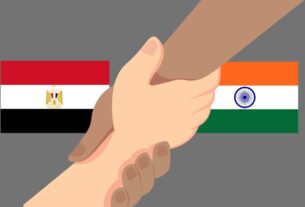The caste system is a significant divisive factor in both rural and urban Karnataka.
By Ajay Ramanathan
Bengaluru, March 21, 2019: Caste-based discrimination is rampant in Karnataka both at a rural as well as an urban level. In North Karnataka, members of the Agarkhed village contend that they face violence as a result of their caste. Arun Gaekwad recalls being beaten up, nearly seven years ago. “There is no measure of justice. Instead of giving us protection, the authorities safeguard members of the upper caste. A member of the village’s Scheduled Caste (SC) community, Gaekwad is not the only victim. Sandip Shinde (name changed) has had a similar experience. “There is casteism in this village. Those who are wealthy exert their influence.”
Both Shinde and Gaekwad belong to the Maratha Kshatriya community. The SC community forms 10 percent of the village’s population. Of the 10,000 people that reside in the village, the Other Backward Classes (OBC) community makes up 70 percent.
The situation in Bengaluru is no different. A 2018 report by The Indian Institute of Management noted that within a ward, certain regions had a significant concentration of SC and Scheduled tribes (ST), whereas other wards had no SC and ST presence.
Believed to be more than 3,000 years old, the caste system in India is a hierarchy that sought to divide Hindus on the basis of the work that they do. The caste system is based on the principle of Dharma (duty) and Karma (work).
The previously mentioned report traces the origins of this system to the Manusmriti- which is an authoritative book on Hindu Law. The caste hierarchy is as follows: Brahmins (priests and teachers), Kshatriyas (rulers and soldiers), the Vaisyas (merchants and traders), and the Shudras (labourers and artisans).
There is another category termed as ‘Dalits’ or ‘Untouchables’ that perform jobs that are too menial to warrant their inclusion within the caste system. Dalits are the most ostracized social class in the country. Reports suggest that there are 160 million Dalits in the country.
Dipika Shivalumar, who has completed her Masters in sociology highlighted the relevance of caste today. “In the ancient times, caste was more a way of life rather than a rigid system. Over time, people accepted it.” Explaining the reasons for why caste is a factor today, Shivalumar noted, ” There is a lot of political involvement with regard to caste. Also, many define themselves in accordance with their caste.” Shivalumar believes that the caste system could be done away with by spreading awareness.
This sentiment was echoed by the Zila Panchayat member Hanumanth Kandekar. He highlighted the role of the Kshatriya community. “The Ksathriya’s are an integral part of the community. They are doing a huge service to the people by displaying their Togalu Gombeyatta art form.” The former is a form of shadow puppetry that is unique to Karnataka. “There is no casteism in the village. If anybody commits a mistake, they would be reprimanded in any village,” Kandekar remarked.
Elaborating further, while speaking about caste differences, he discussed the importance of an arranged marriage as opposed to a love marriage. “Parents instill family values and tradition among children. It would be beneficial to the children if they walk in their parent’s footsteps. Some children go astray and parents cannot be blamed for it.”




